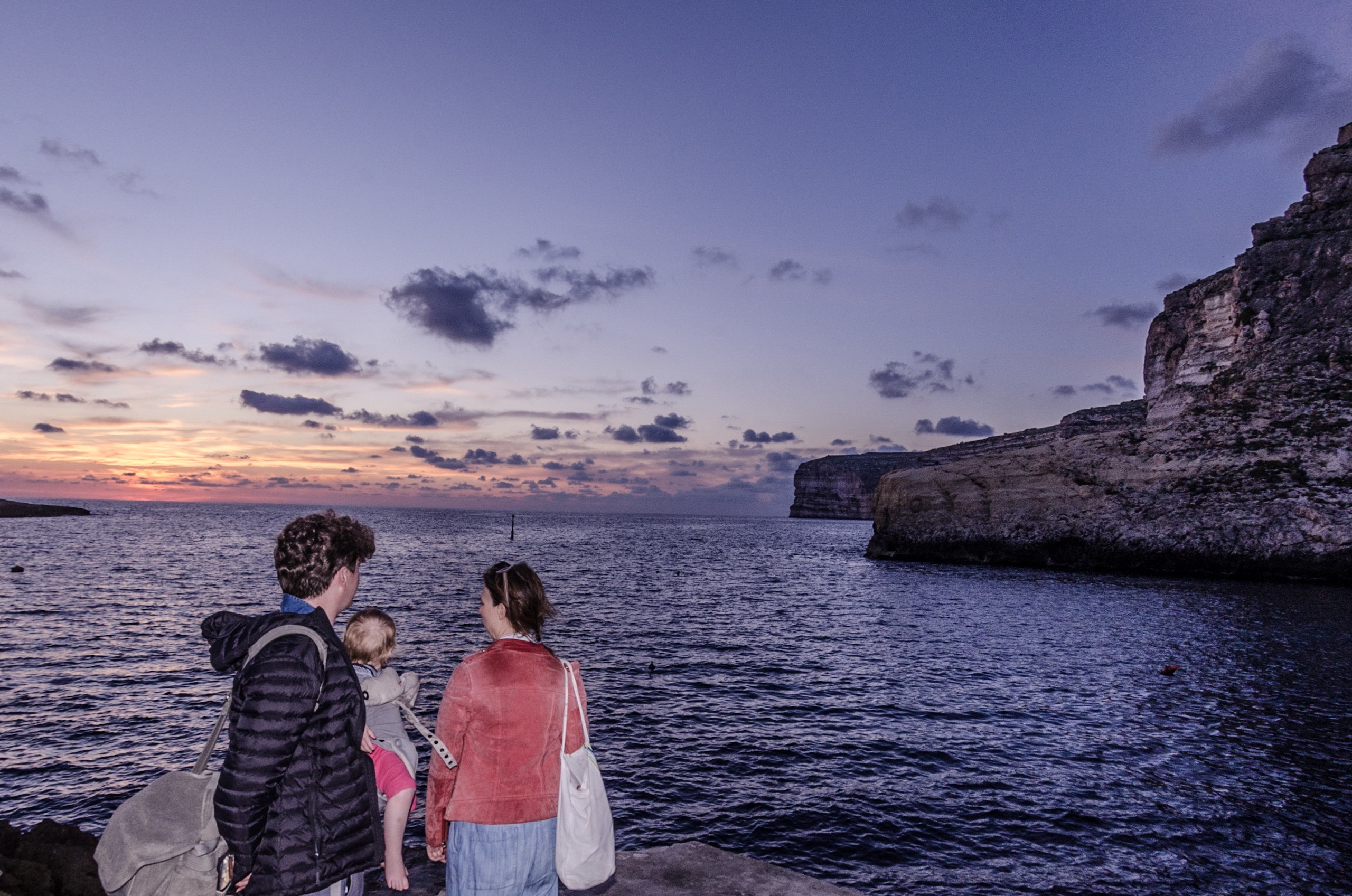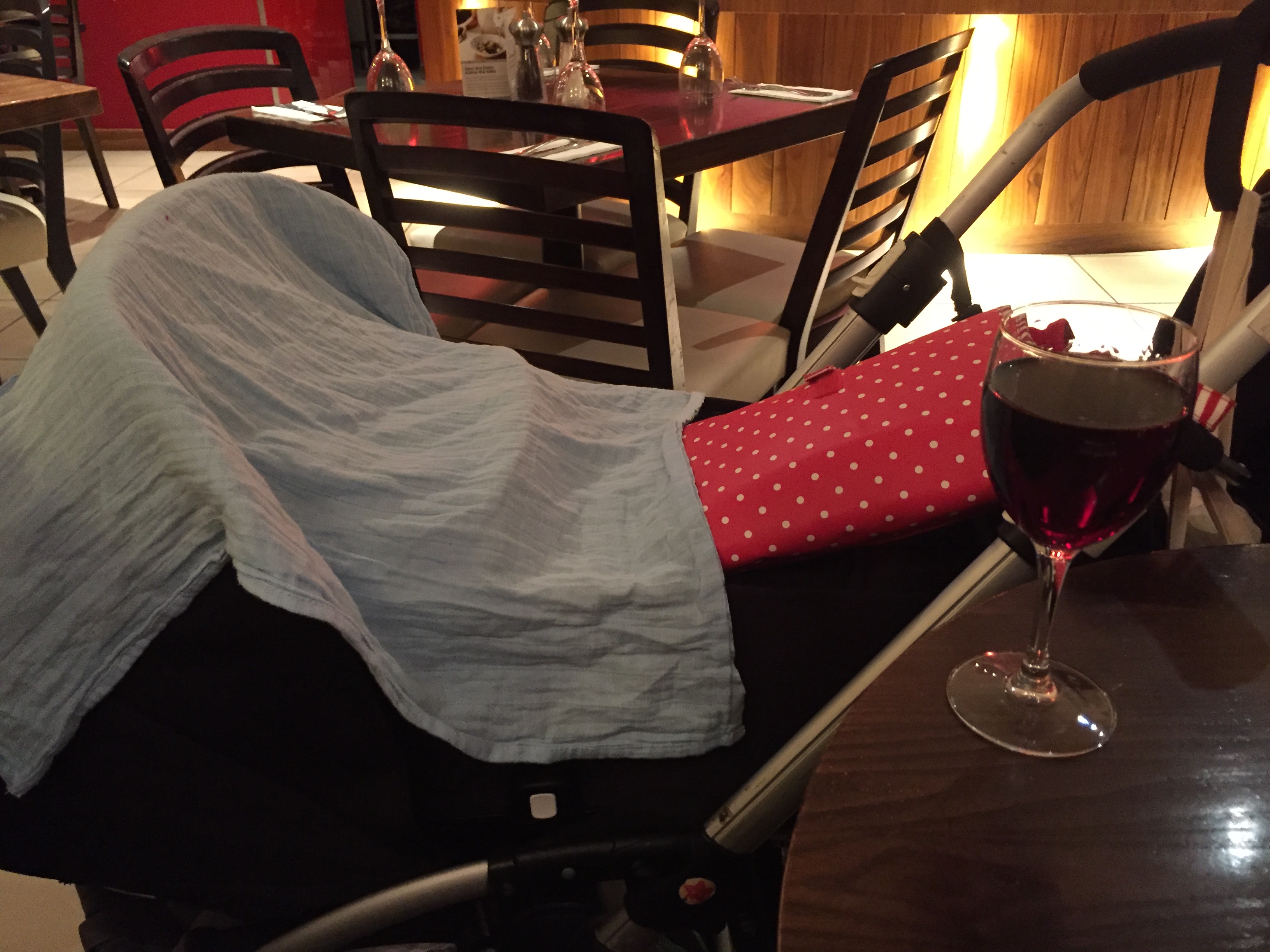We took the baby girl with us to the Maltese island of Gozo in November 2017, when the baby girl was around 14-months-old, and had a brilliant time. We only spent a week there, so this guide is by no means exhaustive – if you’ve been to Gozo with a baby or toddler, please add your own tips in the comments.
Getting there
Gozo doesn’t have its own airport, so you need to fly to Malta International Airport, then transfer by hire car, taxi or bus to the ferry terminal at Cirkewwa. It’s a 40-minute drive and the ferry crossing takes around 25 minutes. You buy tickets on the journey back to Malta. Gozo itself is very small, so your transfer the other end is unlikely to be more than 20 minutes.
If you don’t want to hire a car at the airport (local options are available on Gozo itself), the most convenient way of getting to your accommodation is to book a taxi to transfer straight through to Gozo on the ferry. The cheaper option to have a Maltese taxi drop you at the ferry terminal and a Gozitan one pick you up the other end.
On our recent trip I just assumed that the transfer we had booked would take us direct to our accommodation, and was initially dismayed when it turned out we had to unload at the terminal, board as foot passengers and go from there. In the end, though, it all worked out fine – there’s an efficient luggage pick-up and drop-off service for foot passengers on the ferry which meant we only had to deal with the pushchair and hand luggage.
Getting about
It’s a legal requirement for children under the age of three to use a car seat in Malta, and children up to the age of 10 can only sit in the front seat if they have one. Some taxi companies will be able to supply a car seat, so it’s possible to book one for your airport transfers. If you’ll be using taxis a lot to get around the island though (which I don’t recommend as they’re expensive compared to both buses and car hire), you should bring your own. If you’re hiring a car, you can hire a car seat with it.
Buses on Malta and Gozo (which run 5:30am-11pm daily, plus overnight on Fridays, Saturdays and public holidays) can accommodate up to two unfolded pushchairs. We found drivers and fellow passengers very helpful when it came to getting on and off, even when the bus was totally packed. Gozo bus routes radiate from a central terminus in Victoria, the main town at the centre of the island, which means you have to change buses if you want to get from one seaside place to another, or to tourist spots like the Ġgantija Temples.
High, narrow, uneven pavements make getting around with the pushchair a little perilous, but traffic mainly moves slowly enough in the villages that it doesn’t feel too unsafe in those moments when you have to walk in the road.
Eating out
The staff in every restaurant and café we went to were very happy to accommodate the baby girl, whether by providing a high chair and a bowl of plain pasta or letting us park her out of the way when she was sleeping in the pushchair in the evening. Most also had baby change facilities and several had child menus.
Essentials
You can buy nappies and wipes in the mini markets in the various small resort towns, but for anything else (baby toothbrushes, etc), and for more choice, you’ll need to go to one of the proper supermarkets in Victoria. Supermarkets are open all day, every day – the smaller ones have restricted hours in the off season. Chemists also sell baby supplies – they are usually open Monday-Saturday, though at least one on the island is always open on Sunday morning.
In terms of baby food and formula, small supermarkets have a very limited range, but the big supermarkets are better equipped. Small supermarkets all sell fresh milk.
Healthcare
The phone number for emergency services is 112 and there’s an accident and emergency department at Gozo General Hospital in Victoria. A European Health Insurance Card (I give you the lowdown on how to apply for an EHIC for your child here) will cover you for emergency treatment or treatment for existing conditions. More information on healthcare in Malta and Gozo on the NHS’s website here.
Things to do
There are sandy beaches at Ramla and its much less accessible neighbour, San Blas (don’t try taking a pushchair). San Blas is entirely undeveloped, while Ramla has a small kiosk selling snacks and drinks, so you’ll need to bring everything with you. There’s no shade at either beach, though you can hire umbrellas at Ramla.
There are smaller sandy beaches in the resort towns of Marsalforn and Xlendi, and lovely stony bays all over the place. Our favourites were Mgarr ix-Xini and the gorge at Wied l-Għasri, a secret spot you reach via 100 steps cut into the cliff.
There is a playground in Marsalforn and one right by the bus terminal in Victoria. Here is a handy list I found of lots more.



